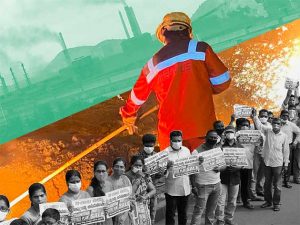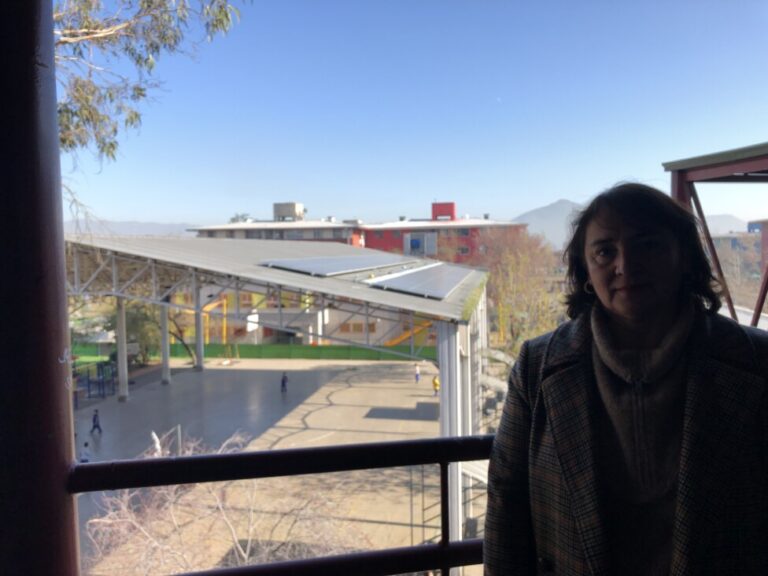فيكتوريا، سيشيل، 27 أغسطس، (GLOBE NEWSWIRE) — أصدرت OKX، صاحبة تطبيق العملة الرقمية الذي يتسم بالريادة على المستوى العالمي، تحديثًا للخدمة لمستخدميه قبيل دمج ETH الذي طال انتظاره في سبتمبر.
ويهدف الإعلان إلى ضمان استعداد المستخدمين لهذا الحدث. كما أنه يحدد بروتوكول OKX ويوفر المزيد من المعلومات المتعلقة بحماية الأصول.
ونظرًا لأن رمزًا جديدًا قد يتم إنشاؤه عبر الهارد فورك، فإن OKX ستتخذ خطوات احترازية للحد من مخاطر التداول الناتجة عن تقلبات الأسعار عبر الهارد فورك. وتأخذ OKX مسؤولية حماية أصول المستخدم على محمل الجد، كما أنها ستكون على استعداد لتقديم المساعدة للمستخدمين في التعامل مع أي مشكلات فنية قد تنشأ أثناء عملية الدمج.
ويمكن قراءة إعلان OKX بالكامل أدناه:
استنادًا إلى إعلانات Ethereum Foundation، فإنه من المقرر حدوث الدمج عند وصول Ethereum Mainnet إلى ارتفاع الكتلة الذي يبلغ 15.540.293. ومن المتوقع حدوث ذلك في الفترة ما بين 10–20 سبتمبر 2022، وربما 15 سبتمبر 2022 (بالتوقيت العالمي) على نحو تقريبي. ستحدث عملية الدمج على خطوتين، Bellatrix وParis.
Bellatrix هي ترقية تم التوفق عليها لإحدى الطبقات لإنشاء سلسلة المنارة “Merge aware”. ومن المقرر حدوث ذلك عند وصول سلسلة المنارة إلى ارتفاع الحقبة الذي يبلغ 144.896، في 6 سبتمبر 2022 (بالتوقيت العالمي) بشكل تقريبي.
Paris هي انتقال طبقة التنفيذ من إثبات العمل إلى إثبات الحصة. وسيحدث ذلك عندما تحقق سلسلة إثبات العمل التابعة لـ Ethereum قيمة تبلغ 5875000000000000000000000 للصعوبة الكلية النهائية، وذلك بحلول 15 سبتمبر 2022 (بالتوقيت العالمي).
في هذه المرحلة، سيتم دمج طبقة تنفيذ Ethereum في سلسلة منارة إثبات الحصة، وسيتم إيقاف سلسلة إثبات العمل التابعة لـ Ethereum، وإكمال الدمج.
ولضمان أن تحظى أصولك بمزيد من الأمان، نوصيك بإيداع عملة ETH في OKX خلال وقت مبكر. ستساعدك OKX في التغلب على أي مشكلات فنية قد تنشأ أثناء عملية الدمج.
ونظرًا لأن رمزًا جديدًا قد يتم إنشاؤه عبر الهارد فورك، فإن OKX ستتخذ الخطوات التالية للحد من مخاطر التداول الناتجة عن تقلبات الأسعار عبر الهارد فورك:
- تعليق عمليات إيداع وسحب عملة ETH
سوف تُعلق OKX عمليات السحب والإيداع الخاصة بعملة ETH بالإضافة إلى الرموز الأخرى (ERC–20) التي تستند إلى Ethereum خلال حدثي الترقية. وسنعلن عن التاريخ والوقت المحددين للقيام بذلك.
- 6 سبتمبر 2022 (بالتوقيت العالمي) لترقية تم التوافق عليها لإحدى الطبقات الخاصة بـ Bellatrix
- 15 سبتمبر 2022 (بالتوقيت العالمي) لترقية طبقة التنفيذ الخاصة بـ Paris
- حول عملية الدمج
هناك اثنان من السيناريوهات المحتملة أثناء عملية الدمج.
السيناريو أ
عدم إنشاء رموز جديدة أثناء الدمج. وستستأنف OKX عمليات السحب والإيداع الخاصة بعملة ETH ورمز ERC–20، وخدمات الجسر عبر السلسلة بمجرد التأكيد على أن Ethereum Mainnet تحظى بالاستقرار والأمان.
السيناريو ب
إنشاء رموز جديدة أثناء الدمج. سوف تتعامل OKX مع الرموز التي تم إنشاؤها على سلسلة إثبات الحصة الخاصة بـ Ethereum على أنها “ETH” كما أنها ستتعامل مع الرموز التي تم إنشاؤها على سلسلة إثبات العمل الخاصة بـ Ethereum على أنها رموز متشعبة.
قبل ترقية Paris، قد يتعرف منشئو الرموز المتشعبة على أرصدة ETH. سيتم بعد ذلك إتاحة الرموز المتشعبة لك بنسبة 1:1 في مقتنيات ETH الخاصة بك وستكون متاحة للإيداع والسحب. سيتم تضمين المزيد من التفاصيل المتعلقة بمدى الإتاحة في إعلان منفصل.
سوف تمر الرموز المتشعبة عبر عملية مراجعة القائمة المعتادة قبل أن يتمكن أي شخص من تداولها على OKX. وفي حال نجاح المراجعة الخاصة بالرموز سيتم إخطارك بذلك في إعلان منفصل.
- خدمات التداول
التداول الفوري لن تؤثر عملية الدمج على التداول الفوري لعملة ETH ورموز ERC–20.
التداول على الهامش لن تؤثر عملية الدمج على تداول سلسلة ETH وأزواج الهامش المعزولة. ومع ذلك، سوف تعلق OKX خدمات الاقتراض الخاصة بهامش ETH بالإضافة إلى خدمات الاقتراض VIP. وقبل تعليق الخدمة، قد تقوم OKX بضبط سعر الفائدة على اقتراض الهامش وفق ظروف السوق. سوف نعلمك بالتعديلات في إعلان منفصل.
يرجى ملاحظة أنه إذا كان لديك أي قروض ETH قائمة، بما في ذلك المساواة السلبية في وضع هامش العملة المتعددة في حساب التداول لديك، في وقت التعرف، فسيتعين عليك سداد القرض باستخدام الرموز المتشعبة، وفي حالة السيناريو (ب) فإنه يوصى بسداد قروض ETH الخاصة بك مقدمًا.
العقود الآجلة والتداول الدائم: لن تؤثر عملية الدمج على المقايضات الدائمة لكل من ETHUSDT و ETHUSD، ولا التداول على العقود الآجلة التي تتعلق بكل من ETHUSDT و ETHUSD.
تداول الخيارات: لن تؤثر عملية الدمج على تداول خيارات ETHUSD.
نظرًا لأن أسعار ETH قد تعاني من تقلبات شديدة أثناء الدمج، فإنه يرجى الحد من عدد المراكز لديك أو إغلاقها أو الحد من استخدام الرافعة المالية أو زيادة الهامش مقدمًا. استنادًا إلى ظروف السوق، قد تتخذ OKX المزيد من تدابير التحكم في المخاطر، والتي سنقوم بإعلامك بها في إعلانات منفصلة. وقد يتضمن ذلك، على سبيل المثال لا الحصر:
(1) تعديل مستويات الهامش لمقايضات ETH الدائمة والعقود الآجلة
(2)ضبط مستويات أسعار خصم الهامش الخاصة بعملة ETH في وضع العملة المتعددة ووضع هامش المحفظة
(3)ضبط معدل التمويل وحدود الأسعار للمقايضات الدائمة الخاصة بـ ETH
(4)ضبط المكونات لأسعار مؤشر ETH/USDT و ETH/USD وسعر علامة عقود ETH.
- خدمات متنامية
لن تتأثر عمليات الادخار، الاحتفاظ بالأصول، الاستثمار المزدوج، والمكاسب الذكية بعملية الدمج. سيتم تضمين ETH المستثمرة في الصورة الكلية. يرجى التأكد من اتخاذ تدابير كافية للتحكم في المخاطر، حيث إن تقلبات الأسعار غالبًا ما تشهد ارتفاعات أثناء عمليات الهاردفورك المثيرة للجدل.
القروض: لن تؤثر عملية الدمج على قروض ETH. سيتم تضمين أي ضمانات تتعلق بـ ETH في الصورة الكلية. سيتم أيضًا إدراج أي مسؤولية تتعلق بـ ETH في الصورة الكلية وسيتعين عليك السداد باستخدام الرموز المتشعبة في حالة الهارد فورك.
الاحتفاظ بأصول ETH 2.0: سيتم تعليق الاشتراكات خلال يومي 6 سبتمبر و 15 سبتمبر 2022. سيتم توزيع أرباح BETH الخاصة بك بشكل طبيعي. ويعتمد تضمين الاحتفاظ بأصول ETH في الصورة الكلية على كيفية تعامل سلسلة الفورك مع عقود ETH2.0. وسيكون هناك إعلان منفصل يشرح تفاصيل ذلك.
تعدين التمويل اللامركزي: لن تتأثر الاشتراكات في جميع المشاريع. سيتم تعليق الاحتفاظ بالحصص والاسترداد على السلسلة خلال يومي 6 سبتمبر و 15 سبتمبر 2022. وسيتم تأخير الاسترداد وتوزيع الأرباح.
- خدمات النقود الورقية
لن تؤثر عملية الدمج على خدمات النقود الورقية.
- التحويل
لن تؤثر عملية الدمج على خدمات تحويل عملة ETH.
للاستفسارات بشأن هذه القائمة، لا تتردد في الاتصال بنا في مجموعة OKX Telegram الرسمية أو من خلال مركز الدعم.
للحصول على مزيد من لمعلومات، يُرجى التواصل مع:
Media@okx.com
نبذة عن OKX
هي ثاني أكبر بورصة عالمية للعملات الرقمية من حيث حجم التداول ونظام web3 الرائد. يبلغ عدد العملاء لدى OKX أكثر من 20 مليون عميل على المستوى العالمي، وتشتهر بكونها التطبيق الأسرع والأكثر موثوقية للمستثمرين والمتداولين المحترفين في كل مكان لتداول العملات الرقمية.
ونظرًا لكونها الشريك الأكبر لنادي مانشستر سيتي في الدوري الإنجليزي الممتاز، وفريق ماكلارين في سباق سيارات فورميولا 1، ولاعب الجولف إيان بولتر، والبطل الأوليمبي سكوتي جيمس، وبطل سباقات فورميولا 1 دانيل ريكاردو، فإن OKX تهدف إلى تحفيز تجربة المعجبين من خلال فرص مالية ومشاركات جديدة. كما أن OKX أيضًا هي الشريك الرئيسي لمهرجان Tribeca كجزء من مبادرة لجلب المزيد من المبدعين إلى Web3.
وفيما يتعلق بما هو أبعد من بورصة OKX، تبرز محفظة OKX التي تمثل أحدث عروض المنصة للأشخاص الذين يتطلعون إلى استكشاف عالم الرموز غير القابلة للاستبدال والميتافيرس أثناء تداول رموز GameFi و DeFi.
لمعرفة المزيد حول OKX، يمكنك تنزيل تطبيقنا أو زيارة الموقع الإلكتروني: okx.com




















